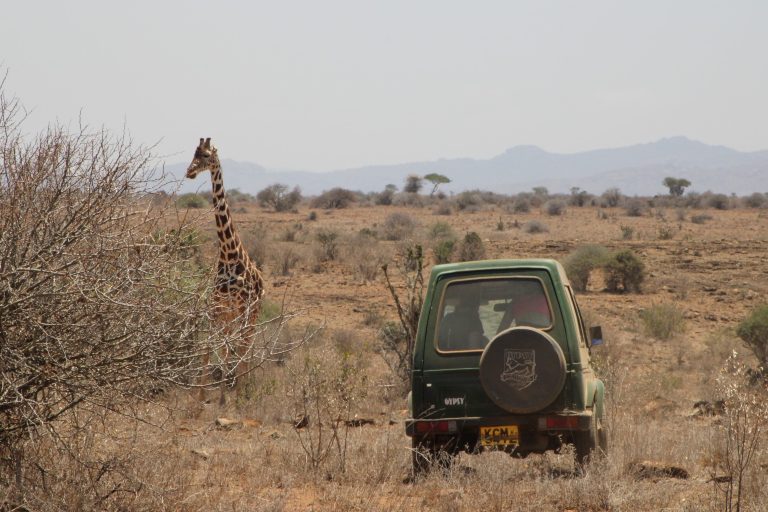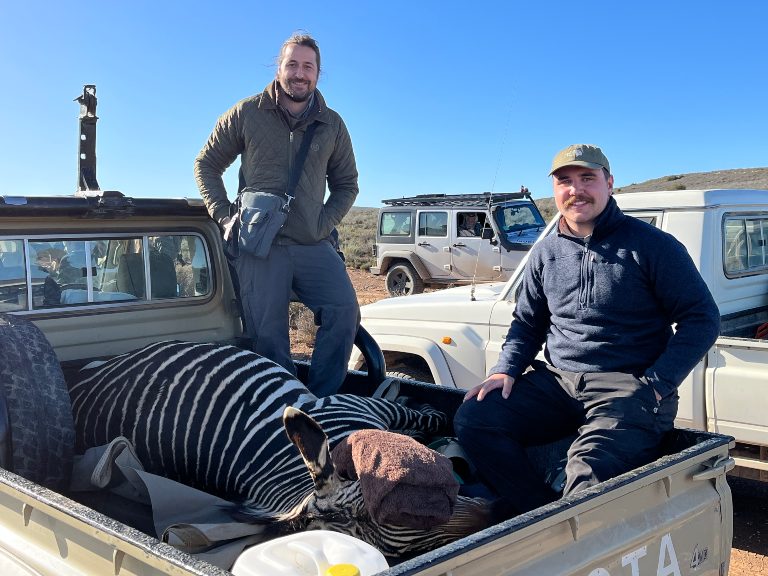Encouraging sustainable habitats in Africa where wildlife can thrive
The University’s work in eastern and southern Africa aims to change conservation strategies to help stop the decline of endangered animals.
Research summary
The three main areas of focus are:
- Exploring how human disturbance impacts animal behaviour in east Africa.
- Evaluating the risk of disease when livestock, wildlife, and humans share environments.
- Identifying loss of historical habitats to help local stakeholders target reintroduction and management of endangered zebra and rhinos in Kenya.
Understanding how human activity impacts wildlife
Almost all natural landscapes – apart from those dominated by desert, tundra, rock and ice – have been exploited by agriculture, settlements and resource extraction. These practices, along with climate change, have increased the interactions and sharing of space between humans and wildlife, with certain species being pushed out of their natural habitats. This can lead to challenges such as livestock and wildlife competing over the same resources and an increased risk of disease transmission between the two.
Globally, there has been a push to increase protected biodiversity areas, yet species populations continue to decline.
A likely contributing factor is that land that is not deemed economically valuable (highly productive or easily accessibly) to humans is set aside or left for nature. We tend to focus our conservation efforts in these unwanted natural areas (high, rocky, or far from a reliable water source) where biodiversity struggles to thrive.
Being able to understand and mitigate these challenges is essential to promoting co-existence.
Examining animal behaviour and response to risk
Research by The University of Manchester is exploring species marginalisation – the protection of species in sub-optimal habitats – and how common it is. The team are also exploring how we can identify marginal populations and how best to incorporate such populations into conservation planning.
Animals often face difficult decisions where they balance the risks of human activity and predators with the availability of water, food and refuge. Our research evaluates how water extraction in the Arusha-Kilimanjaro ecosystem affects livestock and wildlife space use to understand these motivations behind animal behaviour, inform better practices for conservation efforts and help communities living close to wildlife.
Researchers are also evaluating how reticulated giraffes – commonly found in Somalia, southern Ethiopia, and northern Kenya – respond to human presence and habitats by changing their behaviour, location and diets. Giraffes vary in their social interactions and habitat use depending on sex, seasonality and predator pressure, making them an ideal species to investigate the intricacies of risk.

Exploring the risk of infectious diseases in Kenya
Zoonotic diseases (those that spread from animals to humans) are responsible for pandemics and present significant global challenges to human and animal health.
These diseases can cause economic hardship for local communities and potentially conservation crises. Although most emerging disease transmission is from wildlife to livestock, domestic animals also pose risks to wildlife.
The Laikipia Plateau in Kenya is home to a mix of nature conservancies, community pastoral group ranches and commercial livestock properties. Its livestock numbers, particularly goats, sheep and donkeys, are increasing and mixing with wildlife, which could lead to changes in disease prevalence.
Our research focuses on how these interactions between wildlife, livestock and humans affect the risk of disease in Laikipia. So far, researchers have identified high infection levels in livestock and wildlife associated with drought and sharing limited water sources. The research is used to inform communities about transmission risk and water management.

Improving the growth of endangered zebra and rhino populations
The team are working closely with local partners – including local and regional government, private reserves and South African academics – to identify priority measures to help introduce the South African Cape mountain zebra, Grevy's zebra and black rhinos into conservation areas. All are critically endangered, and maximising their population growth rates and ensuring resilience are the main objectives behind the research.
So far, our research has helped to identify the environmental factors that are most important for managing health, behaviour and reproduction across populations while evaluating how human disturbance and resource use impact wildlife populations.
Meet the expert
Professor Susanne Shultz is Professor of Evolutionary Ecology and Conservation Biology at The University of Manchester.
